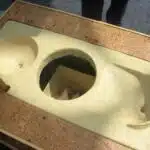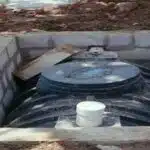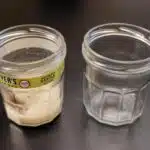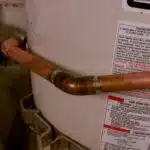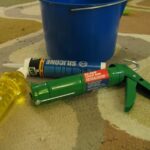Maintaining a clean and hygienic toilet is essential for not only aesthetic purposes but also for promoting good health. While most people are keen on cleaning the toilet bowl and seat, they often neglect the tank, which can harbor bacteria and germs that can contaminate the water supply. Therefore, it’s crucial to clean the toilet tank regularly to prevent unsightly stains and odors from developing.
Cleaning a toilet tank the right way requires attention to detail and adherence to specific guidelines. The process involves several steps, including shutting off the water supply, draining the tank, scrubbing away any buildup or grime, disinfecting with appropriate products, and restoring the water supply. In this article, we’ll outline these steps in detail to ensure you know how to clean your toilet tank effectively. By following these tips, you’ll not only have a cleaner bathroom but also contribute to promoting public health by preventing the spread of germs and bacteria through contaminated water.
Importance Of Cleaning The Toilet Tank
The toilet tank is an essential part of your bathroom that requires regular maintenance. Neglecting to clean it can lead to unpleasant odors, mold growth, and even health risks. For instance, a recent study found that the bacteria present in dirty toilet tanks can cause skin infections, respiratory problems, and other illnesses. Therefore, it’s crucial to keep your toilet tank clean and hygienic.
Toilet tank maintenance involves more than just wiping down the exterior surface or flushing the water once in a while. You need to open the tank and clean both its interior walls and components thoroughly. Most homeowners avoid this task due to lack of knowledge or fear of damaging their toilet. However, with proper guidance and tools, cleaning your toilet tank can be easy and straightforward.
Ignoring the health risks of a dirty tank can have dire consequences for you and your family’s well-being. Besides inhaling harmful bacteria, a clogged or uncleaned tank can also affect the flushing mechanism of your toilet or cause water leaks. Therefore, investing time and effort into maintaining your toilet tank is not only beneficial for hygiene but also helps prevent expensive repairs down the line.
Tools And Materials Needed For Cleaning
When it comes to cleaning a toilet tank, having the right tools and materials is essential for achieving the best results. Below are some of the recommended tools and materials you will need for this task.
Firstly, you need a quality pair of gloves to protect your hands from harmful bacteria and cleaning chemicals. It is also important to have a scrub brush that can reach all areas inside the tank, including corners and tight spaces. A plastic scraper will come in handy for removing any stubborn stains or mineral buildup. Finally, a bucket or container can be used to collect old water and cleaning solution from the tank before disposing of them safely.
In addition to these tools, using the best techniques and recommended products can make a significant difference in cleaning your toilet tank effectively. For instance, mixing vinegar with baking soda creates an excellent natural cleaner that can remove stains and disinfect your toilet tank without harsh chemicals. Another popular product is bleach, which is effective in killing germs and removing tough stains. However, it should be diluted correctly to avoid damaging the toilet tank.
Now that you know what tools and materials are required for cleaning a toilet tank effectively, it’s time to shut off the water supply before proceeding with the next steps. This will prevent any accidental flushing or spilling during the cleaning process. Simply locate the valve behind or beside your toilet bowl and turn it off by turning it clockwise until it stops moving. Once done, you’re ready to move on to the next step!
Shutting Off The Water Supply
Water supply management is an important step in cleaning a toilet tank. Before starting the cleaning process, it is essential to shut off the water supply to avoid any unwanted overflow or flooding. The water supply valve can typically be found near the base of the toilet or on the wall behind it.
To turn off the water supply, locate the valve and turn it clockwise until it is fully closed. If you are unsure which direction to turn the valve, consult with a professional plumber or refer to your user manual. It is also recommended to flush the toilet once after shutting off the water supply, as this will help drain any remaining water from the tank.
Toilet tank maintenance should not be overlooked, as it helps prevent buildup and prolongs its lifespan. Shutting off the water supply during cleaning ensures that all surfaces can be thoroughly cleaned without interference from running water. Proper water supply management and regular maintenance will keep your toilet tank in good working condition for years to come.
Transition: With the water supply turned off, it’s time to move on to draining the tank.
Draining The Tank
Did you know that the average American flushes their toilet about five times a day? With that much use, it’s no wonder that toilet tanks can quickly accumulate bacteria and grime. Properly draining the tank is an essential step in cleaning your toilet effectively.
To start, turn off the water supply to the toilet and flush it once or twice to empty as much water as possible from the tank. If any water remains, use a sponge or towel to soak it up. Next, locate the valve for draining the tank at its base. Attach a hose to this valve and place the other end of the hose in a bucket or outside area where it won’t cause any damage. Turn on the valve and allow all of the remaining water to drain out.
It’s important to dispose of this water responsibly since it contains harmful chemicals and bacteria. Avoid pouring it down drains or onto your lawn where it may contaminate groundwater sources. Instead, pour it into a designated sewer cleanout or contact your local sanitation department for guidance on proper disposal methods. Taking these steps will help ensure that you not only clean your toilet effectively but also protect both your health and the environment at large.
As you have now drained all of the water from your toilet tank, let’s move on to removing any buildup or grime left inside using safe and effective cleaning methods.
Removing Any Buildup Or Grime
Once you have drained the tank, it’s time to tackle any buildup or grime that may be present. Preventative measures can go a long way in keeping the tank clean, such as using a toilet bowl cleaner tablet or adding vinegar to the tank periodically. However, if buildup has already occurred, there are effective cleaning solutions available.
One option is to use a mixture of baking soda and vinegar. Simply pour half a cup of baking soda into the tank and let it sit for 10 minutes. Then, add one cup of vinegar and let it sit for another 10 minutes before flushing. This solution will help remove any buildup or grime in the tank.
Another effective solution is to use bleach. Add one cup of bleach to the tank and let it sit for 10-15 minutes before flushing. Be sure to wear gloves when handling bleach and avoid mixing it with other cleaning products as this can produce harmful fumes.
Now that any buildup or grime has been addressed, it’s time to move onto scrubbing the tank to ensure a thorough clean.
Scrubbing The Tank
While some may find the idea of scrubbing a toilet tank daunting, it is an essential task that should not be neglected. A clean toilet tank ensures that the water in the bowl remains clean and free from bacteria, which can cause unpleasant odors and even illnesses. Some may argue that cleaning the tank is unnecessary since it is not visible, but neglecting this part of the toilet can lead to more significant problems down the line.
When it comes to scrubbing techniques for a toilet tank, there are several effective methods. One popular technique is using a mixture of baking soda and vinegar. This natural solution helps break down any mineral buildup or stains in the tank and leaves it sparkling clean. Another method involves using bleach, but caution must be taken as bleach can be harmful if not used correctly.
The frequency of cleaning your toilet tank depends on several factors such as usage, water hardness, and cleanliness preferences. However, it is recommended to clean the tank at least once every six months to prevent any buildup or bacteria growth. In households with hard water or high usage, more frequent cleaning may be necessary. By incorporating regular cleaning into your household routine, you can ensure that your toilet remains hygienic and odor-free.
Moving on from scrubbing the tank itself, next up is cleaning the tank’s lid and exterior.
Cleaning The Tank’s Lid And Exterior
- Firstly, it is important to use a mild soap and warm water to clean the lid and exterior surfaces of a toilet tank.
- A soft cloth should be used to ensure that the surface is not scratched or damaged in any way.
- Additionally, it is recommended to avoid using abrasive cleaners or steel wool to clean the lid or exterior surfaces of a toilet tank.
- Lastly, it is important to thoroughly rinse the lid and exterior surfaces to ensure that no soap residue is left behind.
Cleaning The Lid
When it comes to cleaning a toilet tank, many people forget about the importance of cleaning the lid. However, neglecting this part of the tank can lead to an unsightly appearance and even cause unpleasant odors. To clean the lid properly, start by removing any visible debris with a dry cloth or paper towel. Next, apply a cleaning solution to the lid and let it sit for a few minutes before scrubbing away any stains using effective scrubbing techniques.
The type of cleaning solution used for the lid will depend on the material it’s made from. For plastic lids, use a mild detergent mixed with water. For metal lids, use a non-abrasive cleaner specifically designed for metal surfaces. When scrubbing away stains on the lid, be careful not to scratch or damage its surface. Instead, use gentle circular motions with a soft-bristled brush or sponge until all stains are removed.
In addition to using proper cleaning solutions and scrubbing techniques, it’s important to keep in mind that regular maintenance is key in keeping your toilet tank’s lid looking great. Wiping down the lid after every use can help prevent buildup and reduce the need for deep cleaning sessions. By following these steps and incorporating them into your regular bathroom cleaning routine, your toilet tank’s lid will remain clean and odor-free for years to come!
Exterior Surfaces
When it comes to cleaning a toilet tank, many people focus solely on the inside and forget about the exterior surfaces. Neglecting these areas can lead to an accumulation of grime, dirt, and other unsightly debris that can affect the overall appearance of your bathroom. To properly clean the tank’s exterior surfaces, certain cleaning products and safety precautions must be taken into consideration.
Before starting any cleaning process, make sure to wear protective gloves and eyewear to avoid any accidents or skin irritations. For plastic tanks, use a non-abrasive cleaner mixed with water and apply it using a soft-bristled brush or sponge. For metal tanks, use a cleaner specifically designed for metal surfaces and apply it using a cloth or sponge. Scrub gently in circular motions until all dirt and stains are removed.
After cleaning the exterior surfaces of the tank, rinse thoroughly with water to remove any remaining cleaning solution. Wipe down the surface with a clean cloth or towel to ensure that it is completely dry before replacing any accessories or covers. By regularly maintaining the exterior surfaces of your toilet tank, you can prevent buildup and keep your bathroom looking spotless for years to come!
Disinfecting The Tank
After cleaning the tank’s lid and exterior, it is important to disinfect the tank. Disinfecting the toilet tank provides several benefits. It helps eliminate bacteria, germs, and other harmful microorganisms that may cause illnesses. Additionally, disinfecting the toilet tank helps prevent stains and unpleasant odors.
Neglecting to disinfect the toilet tank can pose several risks. The accumulation of bacteria and germs in the tank can lead to the development of molds, mildew, and other types of fungi. These microorganisms thrive in damp environments such as toilets, causing health issues such as respiratory problems and allergies.
To avoid these risks, it is crucial to disinfect your toilet tank regularly using appropriate products. There are several options available on the market ranging from chemical-based cleaners to natural alternatives such as vinegar or baking soda. It is essential to choose a product that effectively kills bacteria and germs without damaging your plumbing system or harming your health.
Transitioning into the subsequent section about choosing the right products for disinfection, it is crucial to consider factors such as effectiveness, safety, affordability, and environmental impact when selecting a product. By making an informed decision about which product to use for disinfection purposes, you can ensure that your toilet remains hygienic and free from harmful microorganisms.
Choosing The Right Products For Disinfecting
When it comes to cleaning a toilet tank, choosing the right products for disinfecting is crucial. After all, you don’t want to use just any cleaner that may not effectively kill germs and bacteria. However, with so many products available in the market, selecting the right one can be overwhelming.
Product selection should be based on the specific needs of your toilet tank. For instance, if you have hard water stains or mineral buildup in your toilet tank, you may need a product specifically designed for removing these stains. On the other hand, if there are mold and mildew present in your toilet tank, you will need a different product that can eliminate them effectively.
Disinfecting methods also vary depending on the product you choose. Some products require longer exposure time to kill germs and bacteria while others work quickly. It’s important to read and follow the instructions carefully to ensure that you are using the product correctly and effectively.
In summary, choosing the right products for disinfecting your toilet tank is essential to maintain hygiene levels in your bathroom. Take into account factors such as specific needs and disinfecting methods when selecting a product. By doing so, you can ensure that your toilet tank is thoroughly disinfected and free from harmful germs and bacteria. With this step complete, it’s time to move onto restoring the water supply for your toilet tank.
Restoring The Water Supply
To restore the water supply to your toilet tank, there are a few things you need to check. First, make sure that the water valve is fully open. Sometimes, valves can get stuck or partially closed, which can cause low water pressure. If the valve is open but you’re still experiencing low pressure, then there may be a problem with your home’s plumbing system.
If you’ve checked the valve and it’s working properly, then you’ll need to troubleshoot any leaks that may be causing low water pressure. A common cause of leaks in toilet tanks is the flapper valve. This rubber seal sits at the bottom of the tank and opens when you flush to allow water to flow into the bowl. Over time, these valves can wear out or become misaligned, which can cause leaks and reduced water pressure.
To check for leaks in your toilet tank, add a few drops of food coloring to the water in the tank and wait 15-20 minutes. If you see colored water in the bowl after this time period, then you have a leak somewhere in your system that needs addressing. Proceeding without fixing these issues could lead to further complications down the line.
Checking For Leaks
- Checking the toilet tank for any leaks is an important step in ensuring the toilet is functioning properly.
- To identify if there are any leaks, inspect the flush valve, water supply line and the flapper for any signs of water seeping or pooling.
- Additionally, check the tank seal, bolts and gaskets for any signs of cracking or damage.
- Finally, to ensure the tank is completely sealed, flush the toilet and check the water level in the tank to confirm that it drops back to the same level after flushing.
Checking The Toilet Tank
To ensure a clean and fully functioning toilet, it is essential to inspect the tank regularly. Tank inspection should be included in your cleaning routine as it can help you identify any leaks or issues that need immediate attention. Also, checking the tank helps in preventing future problems that may lead to costly repairs or replacements.
When inspecting the toilet tank, there are some troubleshooting tips that you should keep in mind. First, examine the water level to ensure it’s not too high or too low. Secondly, check for any cracks or damages on the tank surface. Lastly, verify if all the components inside the tank are working correctly. A faulty component can cause leaks and other problems.
In conclusion, checking your toilet tank is an essential part of keeping your bathroom clean and functional. By following these simple troubleshooting tips during your inspections, you can detect any problems early on and avoid more significant issues down the line. So make sure to add a thorough tank inspection to your cleaning routine to keep your toilet in top condition at all times.
Identifying Leaks
Identifying leaks is a crucial part of maintaining a clean and functional toilet. Leaks can cause water damage, increase your water bill, and even lead to mold growth. Therefore, it’s essential to know how to identify leaks and fix them as soon as possible.
To identify leaks, start by checking the toilet bowl for any visible signs of water. If you notice water on the floor or around the base of the toilet, this could be an indication that there is a leak between the tank and bowl. Alternatively, if you hear a hissing sound coming from the tank when it’s not filling up with water, this could mean there’s a leak in one of the components inside.
Once you have identified where the leak is coming from, it’s time to fix it. Depending on the severity of the leak, you may need to replace some parts or call in a professional plumber. However, some leaks can be fixed easily by tightening loose connections or replacing worn-out washers. Remember that fixing leaks promptly can save you money and prevent further damage to your bathroom in the long run.
Maintaining A Cleaning Schedule
As a professional house cleaner, it is important to not only clean but also maintain cleanliness in a home. One way of doing so is by creating a cleaning checklist. This will enable homeowners to keep track of what needs to be cleaned and when. It also ensures that every part of the house is given equal attention when it comes to cleaning.
Another important aspect of maintaining cleanliness is finding the best cleaning products. Not all products are created equal, and some may not work well for certain surfaces or areas in the house. It is therefore crucial to do research and find the most effective products for each specific cleaning task.
By following a regular cleaning schedule and using the right cleaning products, homeowners can prevent future buildup in their homes. In the next section, we will provide tips on how to prevent common areas from accumulating dirt and grime over time, ultimately leading to less time spent on deep cleaning in the future.
Tips For Preventing Future Buildup
Preventive measures are essential for maintaining a clean toilet tank. One of the most effective ways to prevent buildup is by using a high-quality toilet cleaner regularly. It’s important to choose a cleaner that is specifically formulated for toilets and contains ingredients that can break down tough stains and deposits.
Another long-term solution to preventing buildup is by installing a water softener in your home. Hard water can cause mineral deposits to accumulate in your toilet tank, leading to stubborn stains and clogs. A water softener will remove minerals like calcium and magnesium from your water supply, preventing them from building up in your toilet tank.
Regular maintenance is also crucial in preventing future buildup. Make sure to flush your toilet regularly, as standing water can promote the growth of mold and bacteria. Additionally, you should clean the exterior of your toilet tank with a mild detergent or disinfectant regularly.
As we move on to common mistakes to avoid when cleaning a toilet tank, it’s important to remember that preventive measures are key in maintaining a clean and functional toilet. By following these tips, you can ensure that your toilet remains free of buildup and other issues that can compromise its performance over time.
Common Mistakes To Avoid
As we have discussed in the previous section, taking preventive measures is crucial to avoid buildup and keep your toilet tank clean. However, if you find yourself needing to clean it thoroughly, there are some common mistakes you should avoid.
One of the most frequent mistakes people make when cleaning a toilet tank is rushing through the process. Cleaning takes time and attention to detail, especially when dealing with delicate surfaces such as porcelain. Rushing can cause accidental damage or leave behind residue that will attract more buildup in the future.
Another mistake to avoid is using abrasive materials on your toilet tank. While it may be tempting to use harsh chemicals or scrubbers to remove tough stains, these products can scratch or damage the surface of your tank. Instead, opt for gentle cleaners specifically designed for toilets and a soft-bristled brush.
Remember, taking care of your toilet tank requires patience and careful attention. Avoid rushing and using abrasive materials that can harm its surface. Follow proper cleaning techniques and invest in high-quality products to achieve a sparkling result every time. In the next section, we will explore some final thoughts and additional resources to help you maintain your toilet’s cleanliness effectively.
Final Thoughts And Additional Resources
When it comes to cleaning a toilet tank, it is important to do so regularly to prevent the buildup of bacteria and other harmful substances. While there are many DIY methods for cleaning your toilet tank, it is recommended to use professional cleaning services or specialized cleaners for best results.
Professional cleaning services can provide a thorough and effective clean of your toilet tank, ensuring that all areas are properly sanitized and disinfected. They may also use specialized tools and techniques to remove stubborn stains and buildup that regular household cleaners may not be able to tackle.
If you prefer to clean your toilet tank yourself, it is important to use recommended cleaners that are specifically designed for this purpose. These cleaners can effectively break down and remove stubborn stains and buildup without causing damage to your plumbing or fixtures. Always follow the instructions on the cleaner carefully and take necessary safety precautions when handling chemicals.
| Cleaner Type | Best For | Recommended Products |
|---|---|---|
| Chemical Cleaners | Stubborn Stains & Buildup | Lysol Power Toilet Bowl Cleaner, Clorox Toilet Bowl Cleaner with Bleach |
| Natural Cleaners | Eco-Friendly Cleaning | Seventh Generation Toilet Bowl Cleaner, Bio-Clean Hard Water Stain Remover |
| DIY Cleaners | Budget-Friendly Cleaning | Vinegar & Baking Soda Solution, Borax & Lemon Juice Solution |
In summary, whether you choose professional cleaning services or decide to clean your toilet tank yourself, using recommended cleaners is key to achieving a sparkling clean without damaging your plumbing or fixtures. By incorporating these tips into your regular cleaning routine, you can ensure that your toilet tank remains clean and hygienic for years to come.
Conclusion
Cleaning a toilet tank is an essential part of maintaining a clean and hygienic bathroom. With the right tools and materials, anyone can learn how to clean their toilet tank the right way. It’s important to shut off the water supply, drain the tank, and remove any buildup or grime using appropriate cleaning solutions. Maintaining a regular cleaning schedule can help prevent future buildup and keep your toilet functioning properly.
To prevent future buildup, it’s important to use appropriate cleaning products and avoid harsh chemicals that can damage your toilet tank. Common mistakes to avoid include using abrasive materials that can scratch the surface of your tank or using too much force when scrubbing. By following these simple steps and avoiding common mistakes, you can keep your toilet tank clean and hygienic for years to come.
In conclusion, keeping your toilet tank clean is an essential part of maintaining a healthy home environment. By following these tips from professional house cleaners or cleaning experts, you can learn how to clean your toilet tank like a pro. Remember to use appropriate tools and materials, maintain a regular cleaning schedule, and avoid common mistakes that can cause damage or lead to future buildup. With these simple steps in mind, you can enjoy a sparkling clean toilet every time you use it!
Image Credits
- “tank of school toilet in Ishull Shengjin” by Sustainable sanitation (featured)








